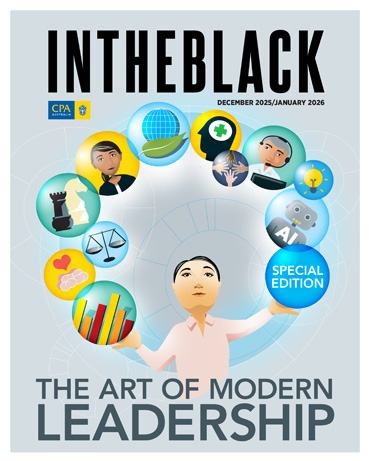Loading component...
At a glance
By Beth Wallace
Continuous learning is key to staying current and competitive in the ever-evolving accounting and finance professions. It can also be crucial for maintaining credentials and meeting continuing professional development (CPD) requirements. But when daily work demands take priority, learning goals can easily be overlooked or delayed.
Micro-credentials, short courses and other “quick learning” opportunities can help professionals overcome this challenge and give them a “toolkit for staying relevant,” says Tahnee McWhirter, partner at HR agency HumanX.
“In an industry where regulatory updates, tech shifts and client expectations change rapidly, finance professionals are leaning into bite-sized learning,” she says.
“The value lies in the immediacy. It’s learning that meets you where you are: between meetings, on the train or for that 15-minute just-in-time refresher. It’s great for sparking new capability, reinforcing past learning and plugging knowledge gaps on the fly.”
What is micro-learning?
Though definitions vary, the consensus is that micro-learning is a method of delivering education in short, focused segments.
Josh Bersin, HR expert and founder of Bersin by Deloitte, describes micro-learning as: “Things we can quickly read, view or consume … These may be a video, a blog or a set of instructional questions that help us think differently than we did before.”
Having gained traction with the rise of the internet, micro-learning has become a flexible and accessible alternative to postgraduate studies, says Kathryn Taylor, a wellbeing, leadership and careers advocate and founder of Turning Point Consulting.
“The beauty of micro-courses is that they meet with current demand and also allow people to scale for industry and career changes,” she says.
“Rather than investing financially, time-wise and mentally, people are able to break down learning and do it in chunks. These micro-credentials then build into small qualifications that keep us agile and learning and ahead of the game.”
Ready to take the next step in your leadership journey?
The benefits of micro-learning
A key benefit of micro-learning is it allows learners to upskill quickly in specific areas, says Sarah Craig, learning and development manager at CPA Australia. This helps people develop the skills and capabilities they need to excel in current and future roles.
“Professionals can curate their own learning pathway based on their current role, any identified skill gaps and their career aspirations,” she says.
“Think about where you are in your career journey, what is important in your current role or profession, and your next desired step. What skills will be important in the future?”
CPA Australia, for example, offers micro-credentials in areas including sustainability, artificial intelligence ethics, data visualisation and storytelling, risk management, negotiation and influence and more.
After completing these courses, which typically take four to six hours, members receive a digital badge that they can display on LinkedIn and other online platforms.
“This demonstrates a commitment to professional development and lifelong learning that can make you stand out as a candidate when looking for new opportunities,” Craig says.
Micro-learning can also support employee wellbeing. In LinkedIn’s Workplace Learning Report 2025, 84 per cent of employees said that learning adds purpose to their work.
Taylor explains that one of the biggest challenges to wellbeing today is the lack of a clear sense of purpose.
“Prioritising bite-sized or simple courses lets you reconnect with the purpose behind what you’re doing,” she says.
Reflect on preferred learning styles
Looking to leverage micro-learning to fulfil CPD requirements? Craig recommends people choose a format that aligns with their learning style — whether that is an online course, micro-credential, webinar or workshop — and progress at a pace that fits around existing commitments.
“Podcasts and articles are also a good way to get up to speed on a particular issue and learn from experts. They can be easily combined with other pursuits,” she says.
Taylor likewise encourages people to identify how they like to learn and to play to their strengths. When learning matches their style, people become more motivated and engaged, which makes it easier to meet CPD requirements, Taylor explains.
“There needs to be a reason for you to want to earn the points, rather than just being told you need to have them.”
Make learning a priority
One of the greatest barriers to regular learning is that people do not prioritise it, Taylor says. Often, they see it as a task that takes up precious time, rather than an opportunity to learn skills that will make them more knowledgeable and efficient.
Nevertheless, she emphasises the importance of creating windows for learning.
“We have to set ourselves a minimum time commitment that’s non-negotiable,” she says. This might mean enrolling in four micro-courses a year and one webinar a month — “whatever you need to do to avoid delaying your career, your sense of self, your achievement and your growth”.
These commitments should be diarised, adds Taylor, so meetings, work tasks and other activities do not take over.
Craig agrees, adding that it can help to break learning hours into manageable chunks. “If you work best when following a schedule, block regular study times in your calendar,” she adds.
For McWhirter, one of the best ways to turn micro-learning into a habit is to tie it to an existing routine.
“Instead of checking inboxes first thing in the morning, encourage teams to spend five minutes on a shared learning experience,” she suggests. “
The emails will still be there, but the curiosity muscle will be engaged.”

